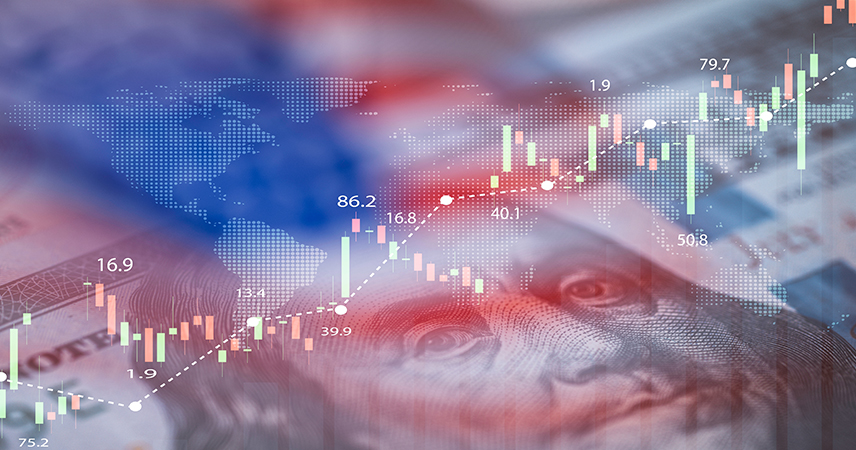The world is on the verge of a second "Trumpian" era, shaped by a new term for President Donald Trump, one of the most controversial political figures since the beginning of this millennium. Economics, the science of scarcity, fundamentally revolves around managing balances. This year is characterized by challenging balances, caused by the interplay of various contradictory factors that impact key economic variables in people's lives.
Trump's Economic Policies: Navigating Protectionism and Global Reactions
As President Trump embarks on his new term, his economic policies are expected to shape the global landscape in significant ways. The administration's approach to economic governance, encompassing protectionist trade measures, corporate tax cuts, deregulation, and infrastructure investment, will likely have far-reaching implications. Geopolitical tensions, particularly with China and the BRICS bloc, are expected to play a crucial role in influencing economic trends. The following analysis delves into the key aspects of Trump's economic policies and their potential impact on global growth, market stability, and international relations:
1- Protectionist trade policies: The Trump administration is likely to maintain its focus on protectionist trade policies, including import tariffs to encourage domestic manufacturing and reduce trade deficits. Trump's administration has consistently aimed to protect American industries from foreign competition, which could lead to higher prices for imported goods while potentially boosting domestic production and job creation.
2- Corporate tax cuts: Trump may push for further corporate tax cuts to stimulate business growth. However, achieving substantial reductions could prove difficult given the federal deficit. Nonetheless, reducing corporate taxes could entice more companies to invest in the United States, thereby fostering economic growth and creating more job opportunities.
3- Deregulation: Deregulation efforts are expected to persist, particularly in industries like energy and finance, aiming to promote business expansion and reduce compliance costs. While potentially stimulating investment and innovation, these measures might also spark concerns about environmental safeguards and consumer protections.
4- Infrastructure investment: There is potential for a focus on infrastructure investment, including rebuilding efforts in regions affected by conflicts, which could drive growth in construction and related sectors. Infrastructure projects have the ability to create jobs, enhance public services, and stimulate economic activity.
5- Monetary policy: Trump's administration may advocate for lower interest rates to boost economic activity, although this could be offset by inflationary pressures from trade tariffs. Lower interest rates can encourage borrowing and spending, but they may also lead to higher inflation if not managed carefully.
Trump's Volatile Return: Market Shocks and Emotional Governance:
Trump's return to power has exacerbated the challenges in addressing crucial balances. His characteristic volatility and tendency to make hasty decisions based on personal convictions, often disregarding the institutional nature of the American governance system, have intensified these difficulties. The resulting fluctuations create continuous shocks to the markets. Merely following the American president's tweets reveals the nature of this volatility, with prices of goods, services, and assets rising and falling in the blink of an eye.
This year is pivotal, marking the beginning of Trump's new term. It is charged with emotions due to the Democrats' legal pursuits and his overwhelming victory over his rival. The coming months will determine the extent of Trump's commitment to his electoral program and the flexibility he may show on contentious issues, potentially easing contradictions in the subsequent presidential years. We should never underestimate the impact of emotions and feelings, as Trump is a highly emotional person driven significantly by them.
2025 Global Growth: Balancing Protectionism and Technological Progress:
Trump's economic policy, while seemingly ambiguous to many, exhibits several constants and commonalities. It embraces protectionism in trade, advocates for financial expansion, regresses on environmental commitments, and promotes technological transformation, including the use of artificial intelligence and digital currencies.
Global growth expectations for 2025 are influenced by various factors, on both sides of the scale. Potential economic slowdown looms, driven by continued monetary tightening policies that lead to higher financing costs. Trump's protectionist policies and subsequent retaliatory measures from various global players further restrict trade and labor movement. Moreover, a Chinese real estate crisis casts a heavy shadow on the financial sector, consuming government stimulus packages without significantly altering the continuous slowdown in Chinese economic growth.
Implications of this potential slowdown are far-reaching. They include reduced investment flows, which further fueling economic slowdown, and declining oil and derivative prices, resulting in reduced profits for oil companies. Conversely, opportunities for clean energy alternatives may increase, albeit outside the United States. Rising unemployment and poverty rates, especially in developing southern countries, present additional challenges to global economic stability.
Economic Growth Prospects: Balancing American Exceptionalism and Global Challenges:
Several factors enhance the prospects for economic growth, most notably the continuation of what is known as "American exceptionalism." Through this phenomenon, the United States moves financial markets, leading growth amidst the quiet of the Chinese giant, in cooperation with the rapidly emerging Indian economy as a significant Asian alternative. A relative recovery in Chinese economic growth for the fourth quarter of the 2024 fiscal year urther supports this trend.
Higher monetary easing in Europe and other parts of the world, following the success of many central banks in containing inflation, contributes to the positive outlook. Additionally, reconstruction efforts in regions devastated by regional conflicts, where the Trump administration seems poised to play a decisive role in ending them, provide another growth driver.
Reconstruction in Gaza, Ukraine, Libya, Syria, and Sudan emerges as a catalyst for growth in construction and building sectors. These efforts have the potential to lead growth in other productive sectors such as steel, cement, and energy, while also significantly absorbing the workforce. The dominance of these growth-enhancing factors results in higher employment levels and better allocation of resources. However, it also leads to increased pressure on fossil fuel products, further damage to the climate, delayed strategies for transitioning to renewable energy sources, and challenges in achieving global economic greening targets. As a result, it becomes increasingly difficult to meet the goal of limiting global warming to 1.5 degrees Celsius by 2050.
Trump's Protectionist Policies and their Impact on the Dollar
Since Trump's inauguration, we have observed fragility and disparity in currency market movements due to deviations in his tone towards protectionist trade policy. These shifts lead to stricter market expectations and immediate declines in the dollar. In the longer term, Trump's trade policy aims to support dollar strength by eliminating various trade deficits with partners and attracting investments to the U.S.
Protectionist measures will impose inflationary constraints through higher production costs from added tariffs and the elimination of immigrants who provide a source of cheap labor. Trump has announced punishment for any trend towards reverse dollarization and alternative currency use, affecting decisions of many countries intending to gradually move away from the dollar, fearing harsh American sanctions.
As inflationary pressures increase, the U.S. Federal Reserve faces difficulty in moving quickly towards monetary easing, keeping dollar interest rates high. This situation fuels economic slowdown and weakens the competitiveness of American products in markets. The stronger dollar crisis reflects on debt and import costs, passing inflation into developing nations, and calling for a slowdown in easing in the MENA region and the Global South.
On the opposite side of dollar expectations in 2025, several factors push towards a relatively weaker dollar. These include reverse dollarization challenging American threats, retaliatory steps against the "Trumpian" trend, and increasing momentum of digital currencies supported by the American president himself. It is clear that a relatively weaker dollar translates to less pressure on international debt crises, easing supply shocks reflected in rising prices, and better fiscal space for poor countries to meet macroeconomic stability and sustainable growth requirements.
Trump's Confrontation with BRICS: Economic and Geopolitical Implications
President Trump's anticipated efforts to decouple the US economy from China, may lead to a more direct confrontation with the BRICS bloc, particularly regarding its initiative to introduce a unified currency aimed at reducing the US dollar's dominance. Trump has vocally opposed the BRICS proposal, viewing it as a significant threat to the dollar’s status as the global reserve currency and to the overall financial stability of the US. His opposition to the BRICS currency initiative highlights broader concerns about China's growing influence within the bloc.
The US administration’s strategy involves targeting financial systems associated with BRICS to protect American economic interests and limit BRICS’ potential as an alternative to the Western-centric economic order. During Trump's second term, a greater focus is expected on strengthening alliances in the Middle East, positioning countries like Saudi Arabia and Egypt as key allies to counteract China’s influence in the region.
Additionally, the Trump administration is expected to implement policies that could hinder engagement with BRICS. These measures could include restrictions on transactions involving BRICS-backed currencies or sanctions on entities linked to BRICS. Such actions would complicate the diplomatic balancing act for countries like Egypt, UAE and KSA which are deepening ties with BRICS while maintaining a longstanding alliance with the United States. Such a scenario would likely place Middle Eastern nations at the forefront of a global power dichotomy, forcing them to navigate a landscape marked by intensified economic and geopolitical polarization.[1]
[1] Nafei, Medhat et al. (2025, January 23). Caught in the Crossfire: Assessing the Impact of the US-China Trade War on Egypt’s economy. ECES. https://eces.org.eg/en/caught-in-the-crossfire-assessing-the-impact-of-the-us-china-trade-war-on-egypts-economy/


